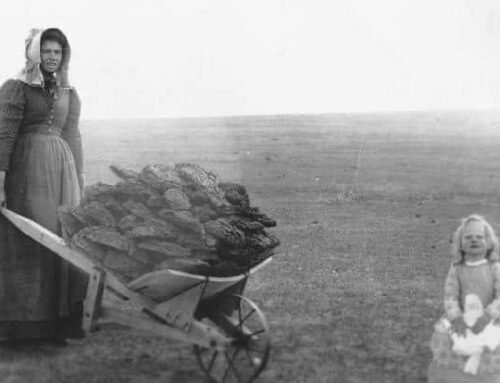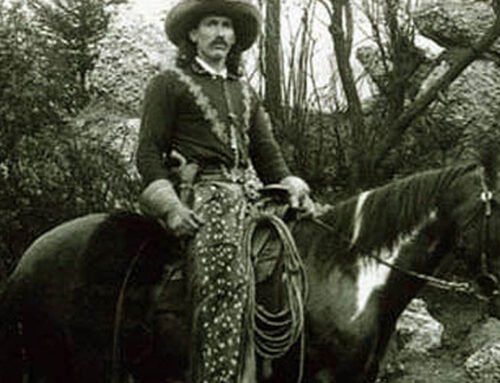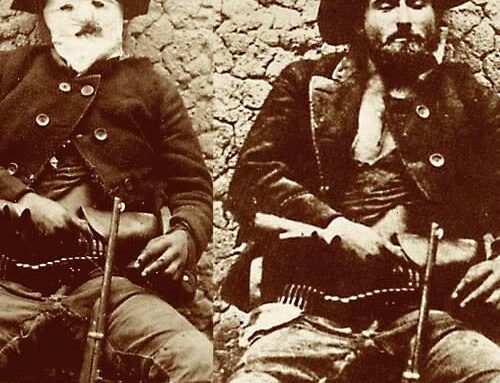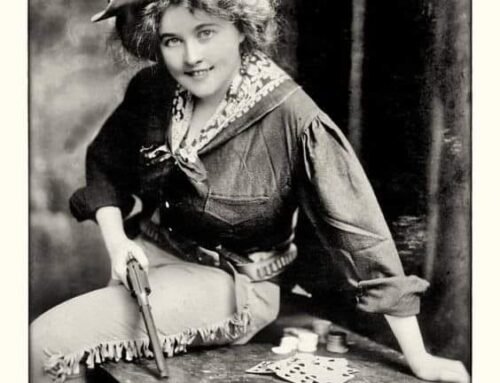Teeth, blood and Old West dentistry
By western author Nick Brumby
“Most emigrants who made their way west did not practice any kind of dental care. As a result rotten teeth and bad breath were commonplace. Dentists wouldn’t become common on the frontier until the 1870s. The average citizen was completely toothless by the time he or she reached fifty.” — Author Chris Enss
 Graverobbers, gunfighters, pliers, cocaine and barber’s chairs. No, this isn’t organised crime on the American Frontier – this was the life of the Old West dentist.
Graverobbers, gunfighters, pliers, cocaine and barber’s chairs. No, this isn’t organised crime on the American Frontier – this was the life of the Old West dentist.
It’s 1870, you’ve crossed the Mississippi, and you’re headed West. Your family and all of your worldly possessions are piled in the back of your prairie schooner, and you grit your teeth as your wagon rattles and shakes over every bump along the trail.
Suddenly you crack a tooth when you hit an especially big pothole, and you almost pass out from the pain. You need help, and fast – the trouble is, it’s the Old West, and dentists are few and far between. Dental equipment often didn’t run too much more than a bottle of whiskey and a big pair of pliers. And if you can find one, the local dentist could be the guy who worked as a bartender, or a wrangler, or a barber.
With whole families (or even towns) sharing a toothbrush, it’s fait to say dental hygiene was not exactly a priority across the American Frontier.
The history of human dentistry stretches back into the mists of time, with archaeological evidence work done on human teeth being dated more than 14,000 years ago.
The ancient Egyptians and Chinese were the first recorded cultures to practise cleaning teeth and removing decay to help maintain health, more than 5000 years ago. Early techniques included chewing on bark or sticks with frayed ends, feathers, fish bones and porcupine quills. They also used materials like silver, jade and gold to repair or decorate their teeth.
 Dentistry began in the United States in the 1630s in Massachusetts, with settlers being accompanied by barber-surgeons. One of the first dentists in America was English surgeon and dentist John Baker, who settled in Boston in 1763.
Dentistry began in the United States in the 1630s in Massachusetts, with settlers being accompanied by barber-surgeons. One of the first dentists in America was English surgeon and dentist John Baker, who settled in Boston in 1763.
By the early 19th Century, the United States had become a leading center in the world for dental developments. However once you headed West you were on your own. People needing dental medical care took what they could find. Barbers often doubled as surgeons and dentists, yanking teeth as well as cutting hair. The familiar red-and-white striped barber pole of today can be traced back to when barbers hung bloody rags out to dry after surgical procedures.
 Tooth extraction was almost the only option available for a toothache at the time and it wasn’t something to look forward to. Thousands died from botched treatments, infections and other complications. so it was hardly surprising that the dentist’s chair was regarded by most with sheer terror. In fact, barber chairs intended for a haircut and shave also doubled as a dental chair.
Tooth extraction was almost the only option available for a toothache at the time and it wasn’t something to look forward to. Thousands died from botched treatments, infections and other complications. so it was hardly surprising that the dentist’s chair was regarded by most with sheer terror. In fact, barber chairs intended for a haircut and shave also doubled as a dental chair.
Pain relief was optional. Teeth were pulled with pliers and by brute force, and often the only anesthesia available was copious amounts of alcohol. This method sometimes led to a dislocated jaw.
The few trained dentists across the Old West sometimes had nitrous oxide on hand to numb the pain, but often even they just gave patients a shot of whiskey. To pull out the teeth, frontier dentists usually relied on pliers or a similar instrument that used the patient’s jaw for leverage.
 However necessity was the mother of invention, and pioneers came up with some interesting pain relief options. If a cowboy had a toothache and was desperate for relief, one solution was cocaine. In the 1880s, toothache drops containing cocaine swept across the American Frontier. This powerful drug acted as a local anesthetic, numbing the pain and giving patients temporary relief from dental agony.
However necessity was the mother of invention, and pioneers came up with some interesting pain relief options. If a cowboy had a toothache and was desperate for relief, one solution was cocaine. In the 1880s, toothache drops containing cocaine swept across the American Frontier. This powerful drug acted as a local anesthetic, numbing the pain and giving patients temporary relief from dental agony.
Pioneers did use toothbrushes—or their equivalents—but these often weren’t enough to combat the popularity of processed sugar, alcohol and tobacco. However, toothbrushes were often too expensive for the poor and were often a “community toothbrush.”
Looking for a replacement tooth? That could also be arranged. For a time during the 18th Century, transplanting teeth from dead to the living was popular. Grave robbers could earn big money by sneaking onto battlefields, pulling teeth from the dead, and selling them to be used as transplants.
Old West dentistry could be dangerous for both patient and practitioner. In Wyoming Territory in 1886, notorious outlaw gunfighter Clay Allison, suffering from a toothache, visited a dentist in Cheyenne. Unfortunately the unhappy dentist mistakenly drilled and extracted the wrong tooth. The outlaw, filled with rage, later returned to the scene of the ‘crime’, pinned down the dentist, grabbed a pair of pliers, and pulled out one of the man’s own teeth.
Allison was prevented from doing any further harm when a group of passing men responded to the dentist’s frantic calls for help.
 One of the most famous dentists of the old West was John “Doc” Holliday. Known more for gambling and gunfighting than dentistry, he began practicing dentistry in Atlanta, but having contracted tuberculosis he moved west and lived in Texas, New Mexico, Denver, Cheyenne, Deadwood, Dodge City, and Tombstone, Arizona. The last years of his life were spent in Leadville, Colorado where he became increasingly dependent on alcohol and laudanum. He died in a sanatorium in Glenwood Springs, Colorado and is buried in Linwood Cemetery. Legend has it that his last words were, “Now that’s funny.”
One of the most famous dentists of the old West was John “Doc” Holliday. Known more for gambling and gunfighting than dentistry, he began practicing dentistry in Atlanta, but having contracted tuberculosis he moved west and lived in Texas, New Mexico, Denver, Cheyenne, Deadwood, Dodge City, and Tombstone, Arizona. The last years of his life were spent in Leadville, Colorado where he became increasingly dependent on alcohol and laudanum. He died in a sanatorium in Glenwood Springs, Colorado and is buried in Linwood Cemetery. Legend has it that his last words were, “Now that’s funny.”
However, some people chose to avoid the trauma of a lifetime of tooth decay altogether. According to True West Magazine, dentistry was so expensive that some people chose to have all their teeth pulled to spare themselves a lifetime of pain. Having all your teeth removed was considered the perfect gift for a 21st birthday or a newly married bride.
There’s nothin’ like the sight of a set of pliers to get you lookin’ after your chompers…

About Nick Brumby
I like a good story. And of all stories, I love westerns the most.
As a kid, I spent far too many afternoons re-watching Clint Eastwood spaghetti westerns, picking up ‘Shane’ for just one more read, or saddling up beside Ben Cartwright when ‘Bonanza’ was on TV each afternoon.
I’m a former journalist and I love horses, dogs, and the occasional bourbon whiskey. I live with my wife, daughter and our ever-slumbering hound in a 1800’s-era gold mining town – our house is right on top of the last working gold mine in the area. There may not be much gold left, but there’s history wherever you look.
I hope you enjoy my westerns as much as I enjoyed writing them!
Happy trails,
Nick



























